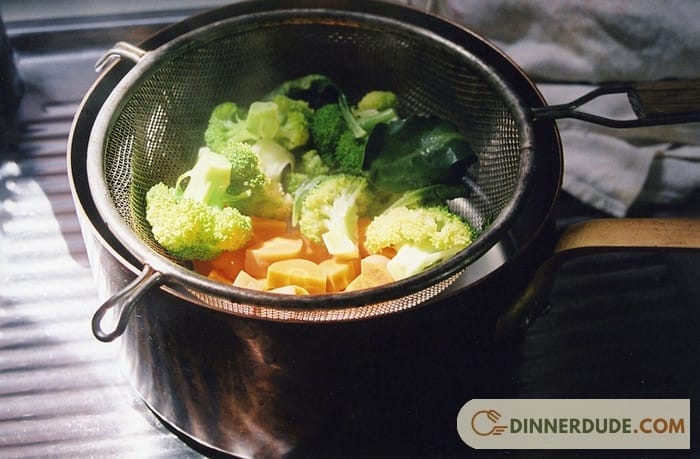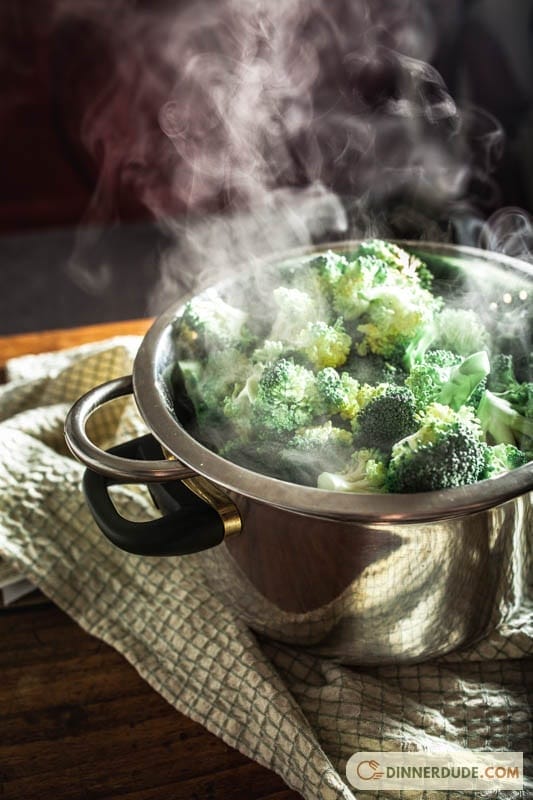Steaming vegetables is a healthy and flavorful way to prepare them, but not everyone has a steamer at their disposal. However, this doesn’t mean you can’t enjoy perfectly steamed vegetables. How to steam vegetables without steamer? There are several alternative methods that can be used, each with its own unique approach and benefits, which Dinnerdude will provide you with below.
Understanding the Basics of Steaming

The Importance of Even Heat Distribution
One crucial aspect of steaming is even heat distribution. This ensures all parts of the vegetable cook at the same rate, resulting in a uniform texture and doneness. When using alternative steaming methods, it’s important to consider how well they can facilitate this even heat distribution.
How to steam vegetables without steamer?

In the absence of a traditional steamer, there are several creative alternatives to achieve the same effect when cooking vegetables. One practical method involves using a colander or sieve placed over a pot of boiling water. The vegetables are positioned within the colander, and a lid is placed on top to trap the steam, facilitating the cooking process.
Another inventive option is to fashion a makeshift steamer using aluminum foil. By shaping the foil into balls or a coil, a platform is created to elevate a plate of vegetables above the water level in the pot. This improvised setup ensures that the vegetables receive indirect heat through the steam generated below, allowing for effective steaming without the need for a dedicated steaming apparatus.
These alternative methods demonstrate the adaptability of steaming, showcasing that with common kitchen items like a colander, sieve, or aluminum foil, one can achieve the benefits of this cooking technique even without a specialized steaming device.
Whether using a colander or fashioning a makeshift steamer, the key is to maintain the separation between the vegetables and boiling water, preserving the nutritional integrity, color, and flavor of the ingredients.
Tips and Tricks for Successful Steaming
Regardless of the method used, there are a few tips that can help ensure success.
- Firstly, cut the vegetables into uniform sizes to promote even cooking.
- Secondly, avoid overcrowding the vegetables, as this can hinder steam circulation.
- Lastly, remember that different vegetables have different cooking times – harder vegetables like carrots will take longer than softer ones like spinach.

In conclusion, while having a steamer can make the process of steaming vegetables more straightforward, it’s certainly not a necessity. With a bit of creativity and understanding of the principles of steaming, you can easily steam vegetables using common kitchen items. Don’t be afraid to experiment with different methods and vegetable combinations to find what works best for you.